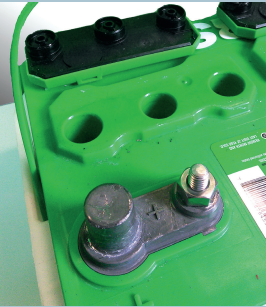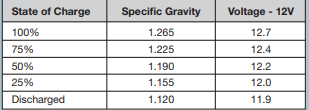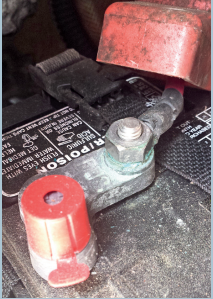Because boating season is almost in full swing and boats are continuously being taken out of storage, we thought it would be helpful to review the importance of battery maintenance.
Caring for the electrical system is a crucial part of the boating maintenance schedule and the battery is at the heart of this system. Here are some things to keep in mind and tips you can pass along to your customers to help keep
them from experiencing any hassles on the water.
It’s usually pretty easy to distinguish between a serviceable and a maintenance-free battery. Those that have removable vent caps are serviceable and those that don’t are not. However, sometimes battery manufacturers hide the vent caps below the stickers they place on the top of the batteries. If you see a sticker with a perforation line running through it,
tear it off to access the removable vent caps. This will alert both you to periodically check the fluid levels inside. If you are uncertain, check with the battery manufacturer to confirm if your battery is serviceable.

Check these levels at least every two months and more frequently in hotter climates. When checking the fluid level, the battery should be fully charged as the fluid level will be highest at full charge. Make sure to not overfill the cells to prevent electrolyte from leaking out as it expands with heat. Be sure to use distilled water when topping off the cells as tap water contains minerals and chemicals that will shorten the life of the battery.
If you are testing a battery with a voltmeter, a fully charged “wet cell” battery should have a reading of 12.7 volts. An AGM or Gel-cell will be slightly higher at 12.8-12.9 volts. A completely discharged battery will register below 12V. Anything below 11V usually indicates a dead cell and therefore, a bad battery.

When it comes to storing a battery in the off season, there are
several things to remember. First, the battery should be fully
charged and the fluid topped off. Second, both cables should
be removed from the battery terminals and the battery should be
kept dry, where the temperature is constant between 40°F and
70°F. These conditions will minimize the rate of self-discharge to
about 5% discharge per month.
At this rate, it will take 5-6 months for the battery to drop below
a 75% charge or a specific gravity of 1.225. This is important
because it is at this point where sulfation begins. Sulfation
hardens the battery plates, which leads to its inability to hold a
charge. Almost 1/3 of all batteries today fail within 2 years due
to sulfation.
Some common causes of sulfation are: over- or under-charging,
using a cheap or older charger, temperatures below 32˚F or over
100˚F, low electrolyte levels, and parasitic drains. However, if
caught early enough, sulfation can be reversed using a smart
charger. Another cause of sulfation is corrosion. If the cable
connections to the terminals become corroded, it hinders the
charging process.
Lastly, vibration causes premature failure. Proper installation
plays an important role in extending the life expectancy of a
battery. A battery should be secured so it won’t budge when
pushing or pulling on it.
Now, you should have a good understanding of what depletes
a battery and how to prolong the life of a battery throughout the
season and while in storage.
